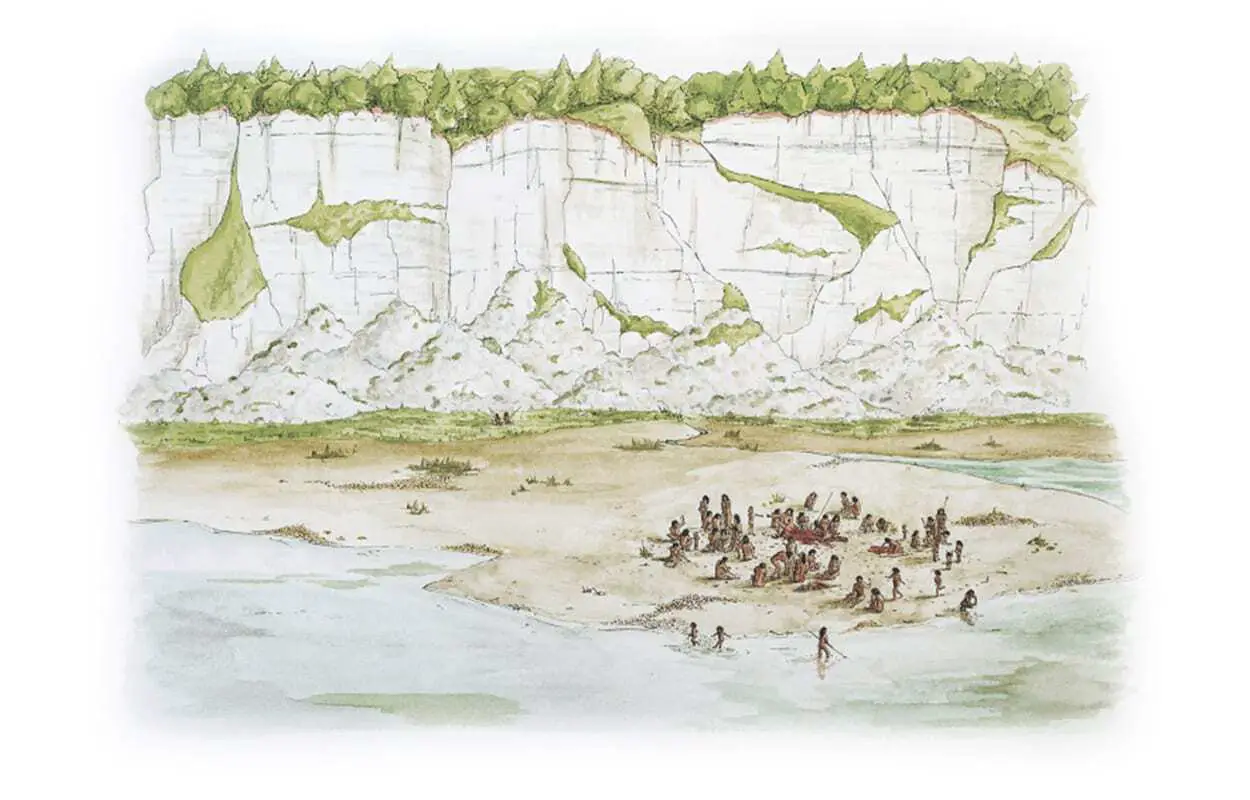An ancient archaeological site in Sussex, dating from almost half a million years ago gives insights into the life and eating habits of extinct human species.
In a new study by the University College London (UCL), archaeologists have pieced together the movements of early humans as they made tools and butchered a horse some 480,000 years ago.
The butchery site is one of several locations found in quarries near Boxgrove in Sussex, that was excavated in the 1980s and 90s by UCL under the leadership of Mark Roberts.
Dr Matthew Pope, Project lead from UCL said: “This was an exceptionally rare opportunity to examine a site pretty much as it had been left behind by an extinct population, after they had gathered to totally process the carcass of a dead horse on the edge of a coastal marshland.”
Pope added: “Incredibly, we’ve been able to get as close as we can to witnessing the minute-by-minute movement and behaviours of a single apparently tight-knit group of early humans: a community of people, young and old, working together in a co-operative and highly social way.”
During excavations, archaeologists discovered eight separate groupings known as knapping scatters, that contained over 2000 flint fragments left as by-product of tool manufacturing. By analysing the flint fragments, the archaeologists were able to determine that the early humans were making large flint knives called bifaces, also described as the “perfect butcher’s tool”.
A study of the horse bones in situ suggests that the animal was stripped of meat, with each bone being broken down to extract the marrow and liquid grease and several bones being used as tools called retouchers. The horse appears to have been completely processed, with the fat, marrow, internal organs and even the partially digested stomach contents providing a nutritious meal for the early human group of 30 or 40 individuals in a social setting.
Simon Parfitt from UCL said: “These are some of the earliest non-stone tools found in the archaeological record of human evolution. They would have been essential for manufacturing the finely made flint knives found in the wider Boxgrove landscape.”
The researchers suggest that the early humans understood the properties of various organic materials, and how to use them to aid in the manufacturing of other tool types. The butchery of the horse and stone refitting patterns also gives an indication of the social interactions, the sharing of ideas, and that the early community was socially and culturally sophisticated.
The project was funded by Historic England, the Arts and Humanities Research Council (University of Bradford’s Fragmented Heritage) with support from the UCL Institute of Archaeology, the Natural History Museum (supported by the Calleva Foundation) and the British Museum.
Header Image Credit : Lauren Gibson – UCL







